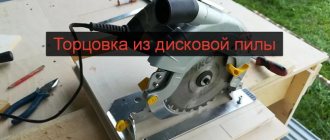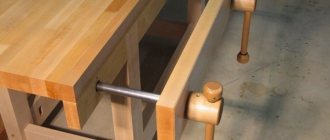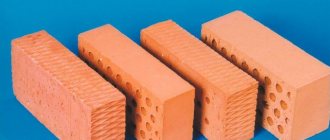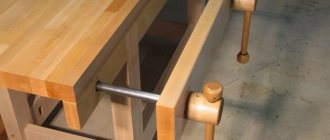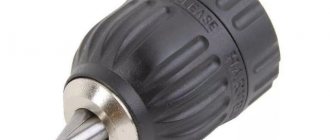The profession of a turner is associated with the processing of small parts that are used in various branches of production and industry. The parts can be made of wood, metal or organic glass. The profession is divided into categories and has a special specialization.
Men work in this industry, as the profession requires a lot of patience and strength. Turner is one of the most difficult and demanding professions. Parts are manufactured at high temperatures. The higher the qualifications of an employee, the more work he performs during a work shift.
Depending on the industry of the enterprise, there are several types of profession: boring machine, sharpener, generalist, carousel operator, revolver operator.
Features of the profession include withstanding high temperatures and the ability to work with a lathe. First of all, the profession of a turner requires candidates who are in good health.
Turning is a dangerous profession, so the employee should proceed to work with caution, despite the level of qualifications and work experience.
General document structure
In the turner's work instructions, some points may vary, depending on the size and specifics of the enterprise. The rights and responsibilities of the machine operator are mandatory, depending on the category. The abilities and skills, requirements for the professional standard of a general-purpose turner and a low-skilled assistant are described in detail. A standard document contains main sections.
- General situation. Includes information about the machine operator's subordination and educational requirements.
- Job responsibilities and work performed, taking into account qualifications.
- Responsibility of the performer of certain types of work.
- Machine operator's rights.
The job description is developed on the basis of the issued order of the chief manager. It regulates the conditions for the hiring and dismissal of a machine operator, his subordination. The list of responsibilities indicates what a turner of each category must know and be able to do.
As required by labor legislation, 1 copy of the instruction is kept by the chief manager of the enterprise, 2 copies by the head of the unit to whom the worker is directly subordinate. If desired, a copy of the instructions is made to the worker and given to him.
Responsibilities of a turner
All the duties of a turner fit into 3 points.
- Preparing for work.
- Carrying out work in accordance with technical documentation and assignments.
- Checking the dimensions and class of roughness on completed parts. Self-control of quality.
For high-quality manufacturing of products, it is important to conscientiously perform the duties of a turner when preparing workpieces for processing. He must:
- check the markings on forgings and castings, or paint on rolled products;
- carry out a visual inspection for defects;
- make sure the sizes match;
- check the accompanying documentation.
Responsibilities of a turner
If defects or discrepancies in size and material are detected, you must immediately inform your immediate supervisor without starting processing.
Machine operators with low qualifications and little experience are required to know their own and similar equipment and conscientiously sharpen parts on it. The instructions expand the job responsibilities of universal turners. In addition to processing parts with a high accuracy class and complex configuration, they are required to train machine shop operators with 2nd and 3rd category. A general-purpose turner usually has assistants or apprentices. He conveys to them his processing experience, the characteristics of different materials, the basics of using devices and specialized tools. All this is written down in the job description of a machine operator with a high rank.
Only by independently checking the part in all dimensions can a turner of any level be confident in the correctness of its manufacture and hand over his products to the acceptance team or transfer them for further processing.
High-quality task performance is impossible without self-control.
Measuring manufactured parts
Inspection of threaded surfaces
The responsibilities of a turner of any level include maintaining the machine and workplace clean and tidy.
Medical contraindications
In order to perform their duties efficiently, a candidate for the profession of a turner must undergo a specialized medical examination, after which the employee is issued a medical examination, which confirms professional suitability for this specialization. There are a number of contraindications that prevent you from starting your professional duties.
A turner cannot perform professional activities if:
- there are problems with the musculoskeletal system;
- impaired cardiovascular system;
- respiratory diseases are present;
- there are obvious skin diseases;
- the examination revealed diseases of the digestive system;
- absence or weak impulses of auditory and ophthalmic analyzers.
Sample instructions depending on the category
The list of functions of a turner includes a detailed description of his professional knowledge and skills, which he is able to perform, depending on his category. The requirements for the level of knowledge are spelled out equally in all instructions. The professional standard for a turner includes secondary and specialized education. A high-level specialist is required to undergo special courses and training to improve his qualifications.
2nd category
The simplest requirements are contained in the job description of 2nd category turners:
- be familiar with the device of the machine;
- know the instrument;
- what are coolants made of?
- where are lubricants used;
- name and purpose of devices;
- be able to sharpen cutters at the correct angle;
- understand the meaning of tolerances and apply them in work;
- distinguish roughness;
- carry out processing according to 12–14 quality, including cutting threads with dies and taps.
Job description of a 2nd category turner
The instructions for a 2nd category machine operator include responsibilities for chip removal. In addition, he has the right to undergo training and certification to obtain higher qualifications.
Download the job description for a 2nd category turner
3rd category
The general section of the job description for a 3rd category turner states that he must have a certain amount of work experience in his specialty. The duration is determined by each enterprise individually, depending on the complexity of the products.
According to the operations performed, the job description determines the knowledge and skills of the machine operator, except for those described for the 2nd category worker:
- check the accuracy of universal machines and adjust their operation;
- know the principle of controlling large-sized turning equipment;
- processing of workpieces according to grade 7–11 on universal machines;
- performing processing of complex parts according to 12 – 14 qualifications;
- know the angles and sharpen tools with carbide inserts;
- use a plasma torch and complex devices;
- operate lathes with center heights of 2000 – 10000 mm;
- calculate the angle of rotation of the caliper for turning cones;
- process castings and mica blanks;
- perform deep drilling;
- sharpen long shafts with allowance for grinding.
Download the job description for a 3rd category turner
Considering the size of the equipment and the large weight of the workpieces and parts, a 3rd category turner must have a sling operator’s certificate and independently hook the workpieces, install them on the machine using a crane, remove the finished parts, and transfer them further.
4th category
The job description of a 4th grade turner additionally provides:
- knowledge of machine kinematics;
- geometry, heat treatment and sharpening with finishing of cutting tools;
- be able to calibrate a profile of average complexity;
- process long and thin-walled parts.
Download the job description for a 4th grade turner
A 4th category specialist must not only work with a plasma torch, but also be able to configure it and adjust the cooling of the equipment.
Job description of a 4th grade turner
In addition to turning center machines, the machine operator must know the principle of controlling equipment that has 3 supports.
5th category
The job responsibilities of a general purpose turner, which includes 5th category specialists, differ from the previous ones not only in the complexity of the work performed. The general part states that in addition to education, he must undergo various training and advanced training courses.
The job description of a 5th grade turner indicates the need to train machine operators with low qualifications in work techniques. Be sure to share with them knowledge on the features of processing various materials. The responsibilities of a highly qualified specialist include:
- processing and finishing of parts with a complex configuration according to the 6th – 7th qualification;
- cutting multi-start threads;
- finishing cutting of worms;
- processing of large-sized complex units and parts;
- grooving and profile correction of rolling rolls made of high-alloy steels.
Download the job description for a 5th grade turner
Specialists of the 5th category are trusted to process ship shafts and cylinder liners. They have assistants who, in addition to training, are engaged in cleaning up shavings.
Station wagon 6th category
At most enterprises, the list of specialties does not include the top professional standard, 6th grade turner. Not all products require such high processing skills for a turner. The job description states that a worker at the professional standard level must train young workers, pass on to them his experience and methods of quality work. In addition, he can check the work of other turners.
Turner of the sixth category
The professional standard all-rounder works with parts of any complexity of grades 1–5. His responsibilities include refractory and tool alloy parts, including calibration of complex surfaces.
Download the job description for a 6th grade turner
Job Description for CNC Machine Operator
- What are the job responsibilities of a CNC machine operator?
- Form and application of the job description of a CNC operator
- Job description structure for a CNC machine operator
- Basic requirements for a CNC machine operator
- Standard Job Responsibilities for a CNC Machine Operator
- Job rights of a CNC machine operator
- Responsibilities of the CNC machine operator
What are the job responsibilities of a CNC machine operator?
A CNC machine is a complex electromechanical device, which today is an integral part of many industries and requires the presence of two specialists for maintenance: an adjuster and an operator. Despite the fact that the operator’s work with the machine requires less qualifications than that of the installer, the operator comes into contact with the device more often.
The main job responsibilities of a CNC machine operator are:
- in equipment maintenance;
- carrying out measuring work;
- setting up equipment for manufacturing a series of parts according to specified parameters.
A complete list of job responsibilities for a CNC machine operator is established in the job description, which is developed by each organization independently.
Form and application of the job description of a CNC operator
The legislation does not establish a unified form for job descriptions, therefore each employer has the right to develop this document in a form that complies with the rules of the internal document flow of the enterprise. After development (and this is already a legal requirement), the job description must be approved by the management of the enterprise. A note about this is traditionally placed at the beginning of the document (either on the title page or in the first paragraph): the date of approval, the manager’s details and his signature.
An employee hired for the position of CNC machine operator must be familiar with the provisions of the instructions before taking up the position. To confirm this, the specialist leaves his signature either on the job description or in a special journal.
Job description structure for a CNC machine operator
The generally accepted structure of a job description for a CNC machine operator involves including in the document all the main provisions that characterize the activities of this specialist in the workplace. This structure was developed by the customs of personnel records management and contains the following sections:
- General provisions. This part of the job description defines the basic requirements for a candidate for the position of operator of CNC machines, such as:
- education;
- experience;
- professional skills;
- legislative and internal documents of the organization with which the employee must be familiar.
This section also contains the rules for hiring, dismissing and replacing an employee, and determines the place of the staffing position of a CNC machine operator in the general organizational chart. The specialist’s immediate superior is also indicated here.
Basic requirements for a CNC machine operator
Working with a CNC machine requires special skills, and therefore education, which can be obtained by studying at a technical school or completing relevant courses, or by getting a job as an apprentice operator of CNC machines in production and mastering the profession directly on the job. Thus, when applying for a position as a CNC machine operator, a secondary specialized education in the field or other technical education is not required if you are supposed to work as an apprentice.
In addition to professional knowledge, a CNC machine operator must be familiar with:
- with safety precautions at work;
- fire safety rules;
- rules of sanitary and personal hygiene;
- internal labor regulations.
In terms of work experience, employers' requirements for a candidate for the position in question may also vary. Thus, when an operator apprentice is hired, no one will require work experience in their specialty. If the applicant applies directly to the position of operator of CNC machines (especially 4th or 5th category), he will need work experience in the specialty from 1 to 3 years.
Standard Job Responsibilities for a CNC Machine Operator
The list of job responsibilities of a CNC machine operator can be divided into several groups:
- actions before the start of the work shift;
- actions during the work shift;
- actions at the end of the work shift.
- Before the start of the work shift, the operator must:
- accept the task from the site foreman;
- study the operational and technological map for the part being manufactured;
- check the condition of the equipment, call an adjuster if necessary;
- check the completeness and serviceability of the instruments and, if necessary, replace them;
- ensure compliance with work process safety rules;
- turn on and prepare the machine for operation.
- During operation, the operator's responsibilities are as follows:
- input of control program;
- manufacturing of parts;
- transfer of the first manufactured part from the batch to the quality control department;
- control of manufactured parts according to the existing scheme;
- adjustment of tool geometry;
- replacement of instruments as necessary;
- placement of finished parts according to storage plans;
- maintaining a work log with notes on problems and inconsistencies that appeared during the shift;
- delivery of products.
- At the end of the work shift, the operator of CNC machines is obliged to:
- clean the machine, used tools and workplace;
- hand over tools and equipment;
- report to your immediate superior on product output and equipment condition;
- turn off the machine and other mechanisms used in the work;
- record in a special journal the changes made to the machine settings.
When defining the job responsibilities of a CNC machine operator in the job description, it is necessary to take into account that the labor functions of this employee may be different, since they depend on the rank of specialist, the type of machine on which he works, and the direction of the enterprise.
Job rights of a CNC machine operator
Information with a list of operator rights in a job description is often combined with a section on the employee’s job responsibilities, since traditionally job rights arise from job responsibilities and are aimed at simplifying the performance of the latter.
The official rights of the specified operator, most often established in his instructions, include:
- the right to a place of work equipped in accordance with the requirements and standards of legislation and safety regulations;
- the right to guaranteed provision of technological documentation and necessary software;
- the right to participate in debugging the work program;
- the right to receive suitable measuring and cutting instruments;
- the right to free provision of protective clothing, footwear and protective equipment;
- the right to become familiar with the decisions of the enterprise management concerning his work activities.
Responsibility and performance evaluation
The job responsibilities of a turner specify not only his rights and the work he performs. The instructions for a turner provide for responsibility, no matter how high the professional standard of the worker. The manual describes in detail the system of rewards for conscientious work and the scheme for calculating and deducting losses in the event of damage to production.
The machine operator is responsible for violating labor regulations. Punishment, depending on the severity of the violation, can be imposed administratively or under an article of civil and criminal law.
Financial liability is provided for poor quality work. Payment is made based on the results of the products turned and handed over to the receiver or craftsman. In the production of defective products, deliberate breakdown of equipment and tools, the turner is obliged to compensate for the damage or modify the parts without additional payment.
Turner's working day
A turner, like all workers at an enterprise, is obliged to observe a work schedule and strictly adhere to the internal labor regulations, which are developed and signed by management. The working day has a strictly scheduled schedule and begins at a specified time.
- Checking equipment for damage.
- Inspection of the workplace for compliance with safety rules and labor protection measures.
- Completion of daily safety and fire safety training.
- Receiving a task from a foreman or an employee of the planning and dispatch service.
- Preparation of tools and devices necessary to complete the task.
- Checking blanks.
- Manufacturing of parts.
- Checking each size for compliance with the drawing and technological dimensions.
As soon as the batches of parts are ready, they are handed over to the foreman or quality control department employee with a note in the payment documentation.
3-4 hours after the start of the shift, everyone goes on a lunch break. On small machines, a 5-10 minute rest is provided every hour, depending on the degree of intensity of the work.
At the end of the work, a 2nd and 3rd category turner working on small machines must remove the chips himself and wipe the entire machine and its components free of dirt. After this, wash and lubricate the guides. On large machines, the bulk of the cleaning work falls on the assistant. A machine operator of 4–6 categories takes part in it.
Turner's work
With a multi-shift work schedule, the machine operator is obliged to hand over the equipment to the replacement. On large units, a single processing operation may span more than one shift. In this case, the machine does not stop; the worker transfers everything to the shift worker. The shavings are removed. Dirt is wiped off only on fixed parts.
OCCUPATIONAL SAFETY REQUIREMENTS IN EMERGENCIES
4.1. In the event of smoke or fire, immediately stop work, turn off electrical equipment, call the fire department, inform the immediate supervisor and administration of the organization, and take measures to evacuate the premises. When extinguishing a fire, it is necessary to use primary fire extinguishing means and take part in the evacuation of people. When electrical equipment catches fire, use only carbon dioxide or powder fire extinguishers. 4.2. In case of injury, the employee is obliged to stop work, notify his immediate supervisor and call emergency medical care or go to a medical facility. 4.3. If voltage (sensation of current) is detected on the metal parts of the equipment, the electric motor of the equipment hums, in case of vibration or increased noise levels, sudden heating and melting of electrical wires, sparking of electrical equipment, breakage of the grounding wire, then it is necessary to stop the operation of the equipment and report the incident to the immediate supervisor . It is prohibited to start work without instructions from the supervisor. 4.4. In all cases of departure, provide the victim with rest and seek medical help as soon as possible. 4.5. If harmful substances enter the respiratory tract, it is necessary to remove the victim from the infection zone into fresh air, lay him down, preferably in a warm place, unfasten his clothes and belt. 4.6. If harmful substances come into contact with the skin, remove contaminated clothing and thoroughly wash the contaminated areas of the skin with plenty of water. In case of contact with eyes, rinse thoroughly and generously with running water. 4.7. If harmful substances get into the gastrointestinal tract, give them a few glasses of warm water or a 2% baking soda solution. 4.8. In case of electric shock, it is necessary to free the victim from the action of the current by immediately turning off the electrical installation with a switch or circuit breaker. If it is impossible to turn off the electrical installation quickly enough, it is necessary to free the victim using dielectric gloves or a dry wooden object, and you must also ensure that you do not become energized yourself. After releasing the victim from the action of the current, it is necessary to assess his condition, call an ambulance and provide first aid until the doctor arrives.

